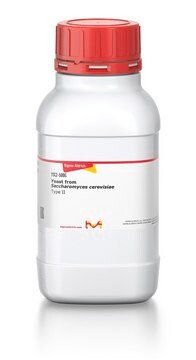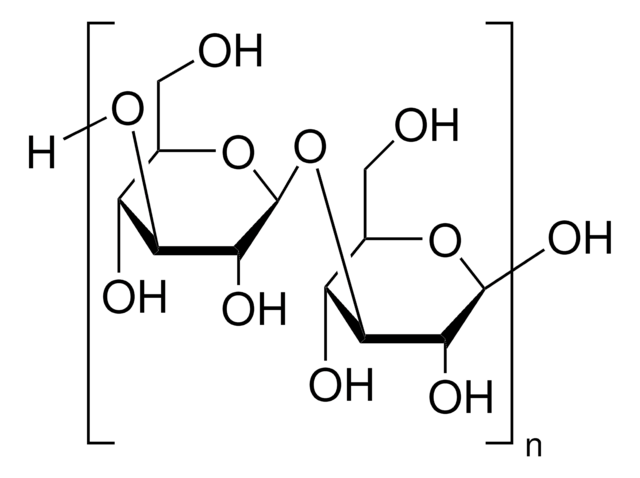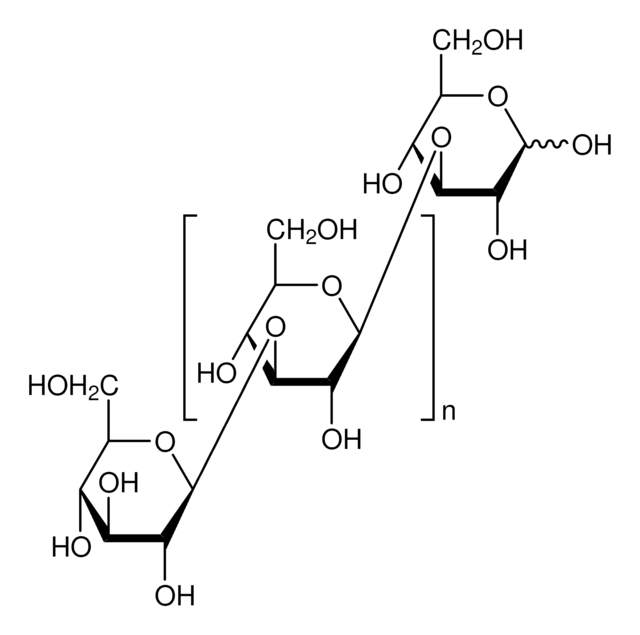M7504
Mannan from Saccharomyces cerevisiae
prepared by alkaline extraction
Sinonimo/i:
D-Mannan
About This Item
Prodotti consigliati
Origine biologica
bakers yeast (whole cell)
Livello qualitativo
Forma fisica
powder
Attività ottica
[α]/D 73 to 89 °, c = 1% (w/v) in water
Impurezze
<1.0% Low molecular weight saccharides (TLC)
Colore
beige
Solubilità
water: ~50 g/L
Cationi in tracce
Na: <2%
Temperatura di conservazione
2-8°C
Cerchi prodotti simili? Visita Guida al confronto tra prodotti
Categorie correlate
Descrizione generale
Applicazioni
Azioni biochim/fisiol
Nota sulla preparazione
Altre note
Codice della classe di stoccaggio
11 - Combustible Solids
Classe di pericolosità dell'acqua (WGK)
WGK 3
Punto d’infiammabilità (°F)
Not applicable
Punto d’infiammabilità (°C)
Not applicable
Dispositivi di protezione individuale
Eyeshields, Gloves, type N95 (US)
Certificati d'analisi (COA)
Cerca il Certificati d'analisi (COA) digitando il numero di lotto/batch corrispondente. I numeri di lotto o di batch sono stampati sull'etichetta dei prodotti dopo la parola ‘Lotto’ o ‘Batch’.
Possiedi già questo prodotto?
I documenti relativi ai prodotti acquistati recentemente sono disponibili nell’Archivio dei documenti.
I clienti hanno visto anche
Il team dei nostri ricercatori vanta grande esperienza in tutte le aree della ricerca quali Life Science, scienza dei materiali, sintesi chimica, cromatografia, discipline analitiche, ecc..
Contatta l'Assistenza Tecnica.










